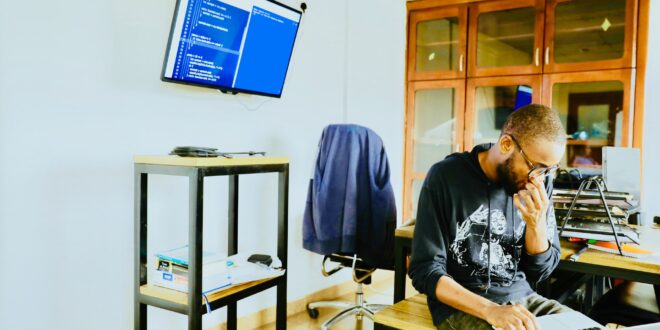In future history books, the spring of 2024 probably will gain the name of time when everything (except software development) stopped. Pre-pandemic rules on work and social interaction often included online services as an opportunity, just doubling offline practices most suitable for that. From now on, everything, having minimal chance to be digitalized, is to be transferred that way. An obligation to hold social distance generates a new wave of customers for both existing and evolving applications, so software developers today face the true-heroic mission of turning the entire world online.
This provides a rapid growth for the market of software development outsourcing, as the demand for developers goes far over the domestic proposition. Executives, previously hesitating about when and in which form it would be better for their business to go online, have received the drive to do this ASAP, but this doesn`t mean they are familiar with the process and are ready to manage remote software development team straight away. Meanwhile, the work on the project often calls for it.

Luckily, there exists an Agile methodology providing solutions – the Scrum management framework, taking into account that client is a person wishing to manage his/her own business, not just the software part. Scrum perfectly satisfies this need, meeting the development process requirements and clients’ expectations, making the remote developers work better. This approach allows keeping development flexible, prompt, and effective.
Scrum isn’t that new as it appears to non-developers or newcomers: first statements of this framework were expressed as early as in the late 1980s, and it has been steadily developing since then. However, the pandemic seems to give the powerful stimulus for Scrum implementation by wider communities of developers. Though it gradually becomes the popular source of managerial ideas in various forms of activities related to the production of results with specified parameters, the genuine ascension of Scrum will happen in development as it is the only proven-effective methodology in Agile specifically designed for remote work. The growth of outsourcing in development these days is intensified by such causes:

The insecurity of interactions offline now makes even those engaged in the office format of software development to revise their usual schedule. An open-space coworking appears to be the least secure alternative, so more and more engineers will perform their duties at home.
Such a freelance approach naturally arises the issue of commensurate work and wages for developers. If there is no need to come daily to the office, the connection between developer and his/her offline job is lost, so (s)he may conceive the total change of the job and collective to deliver more profitable cross-border projects. Naturally, from the developers coming to the market this way, only the best and skilled do become the part of the remote team developing globally.

Given the circumstances of lockdown, people tend to widen their presence online, attempting to compensate for the absence of usual irritants in the information bubble. We have tried shopping, learning, working, and marrying online, and this will lead to a change in consumer habits, which will probably force the business to look for software renovation. The winner in the race for consumer attention and favor will be the one with swiftest adaptation and improvement, that is, the one using Scrum and hiring developers without geographical limits.
According to Scrum principles, the development process is organized in cycles (Sprints) that allow building the project in logically coherent blocks – Sprint Goals. Implementation of each part of code in the final phase of the Sprint delivers some meaningful improvement to the product functionality and, therefore, to its market price and social value.
Developers achieve the stated goal, working in a cross-functional team – an association of people gathered by their software level and personal eligibility, who can perform the required development process top to bottom. The team has to cover the wide spectrum of skills, but, for the sake of management and conversation convenience, the team size must not exceed nine people. A small number of engineers working spirally on short cycles makes Scrum very affordable – the best choice for small and medium businesses, especially in crisis times.

Scrum gives hints on goal achievement in any field. Roles and responsibilities in each team are unique and may naturally differ from project to project, but sustainable effectiveness of the remote team relates to its self-organization and self-improvement. It is crucial to select members carefully and manage the team’s growth. For ultimate success, trending innovators like Brightgrove.us company made their focus the perfect team making, management, and tuition. The only element needed for them to start work is the Product Owner – someone holding the client’s view of what the designed software should be on the finish.
Product Owner communicates this vision to the team on the Sprint start, but probably the best thing about Scrum is its openness to changes on the ride. In the case of the major market shift, there is no more need to deliver unnecessary elements just because they were in the software documentation at the very beginning. Amends made to the documentation after project start are even welcomed if they contribute to the resulting advantages of the product.
While giving the clear directives on each step of the software development, this framework also never limits the team in how to perform their tasks. With the usage of Scrum tools, such as Trello, Jira, Scrumwise, etc., the Product Owner and every member of the team can see the progress in real-time. This level of transparency makes fulfillment and quality control easy.
COVID-19 has not only made people worry about their health, but also raised many questions on the difference between how things were usually done and how they have to be done in the global interrelated community wishing to survive and succeed. From the beginning of the pandemic, Scrum enthralled the world of software development, probably starting the new era in its outsourcing. This trend seems to continue rather long, as software in Scrum is delivered to the client notably faster and cheaper, than in the traditional approaches, and this methodology perfectly resonates with the intention to make everything remote.
 Hi Boox Popular Magazine 2024
Hi Boox Popular Magazine 2024



